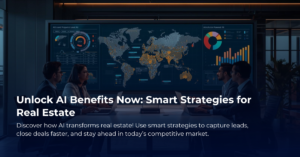How Data and Analytics Are Shaping the Future of Education Apps
Have you ever tried to find the perfect app for your child’s education, only to be overwhelmed by the choices? You’re not alone. Many parents and educators face the same dilemma. The good news is that behind many of these apps, there’s a science driving their effectiveness. Let’s dive into how data and analytics are steering the future of education apps in a way that makes learning more engaging and productive.
What Are Data and Analytics Anyway?
Let’s break it down simply. When we talk about data, we’re referring to the information collected about how users interact with an app. This can include everything from how often they log in, to which features they use most. Analytics is the process of examining that data to make informed decisions. Think of it as using a fitness tracker to see how well you’re doing on your health journey. The tracker collects data, and you analyze it to improve your workouts.
Why Is This Important for Education Apps?
Education apps have a unique goal: they aim to improve learning outcomes. By using data and analytics, these apps can identify what works well and what doesn’t. This means developers can focus on features that help students learn more effectively. But how does this play out in practice?
Personalization Is the Key
One of the standout benefits of incorporating data into education apps is personalization. Imagine if your learning app could adapt to your child’s specific areas of struggle. For instance, if the app sees that your child often has difficulties with math problems involving fractions, it can adjust content to include more practice in that area. This means your child is getting exactly what they need, rather than following a one-size-fits-all approach.
Real-World Example: Duolingo
Take Duolingo, for example. This language learning app uses analytics to track users’ progress and adjust lessons accordingly. If a user struggles with a particular word or grammar rule, the app will provide more exercises focusing on that specific challenge during future sessions. It’s like having a personal tutor available 24/7, without the traditional costs! This level of responsiveness keeps learners engaged and motivated.
Feedback Loops: Continuous Improvement
Another important aspect is the feedback loop created through data collection. Education apps can gather feedback not just from test scores but also from user satisfaction ratings. If a feature isn’t helpful, user data can reveal that quickly. This enables developers to make necessary changes much more rapidly than in traditional educational settings.
Engagement Through Gamification
Data analytics also plays a crucial role in keeping students interested. Gamification is a trend where app developers use game-like elements to make learning more fun. By analyzing how users interact with these features, developers can tweak and improve them, ensuring they hit the right notes in terms of engagement. For example, if students abandon tasks that seem too hard, developers can adjust the difficulty levels based on user data.
Preparing Students for the Future
As we incorporate more data and analytics into education apps, we are not just improving how students learn; we are also preparing them for a data-driven world. Understanding the importance of data literacy will be crucial as they continue into higher education or enter the workforce.
Conclusion: Embrace the Change
The incorporation of data and analytics into education apps represents a significant shift in how learning can be approached. By focusing on personalization, feedback, and engagement, these tools can create a more effective learning environment. So next time you’re exploring educational apps, look for those leveraging data. They might just provide the best support for your child’s learning journey.








